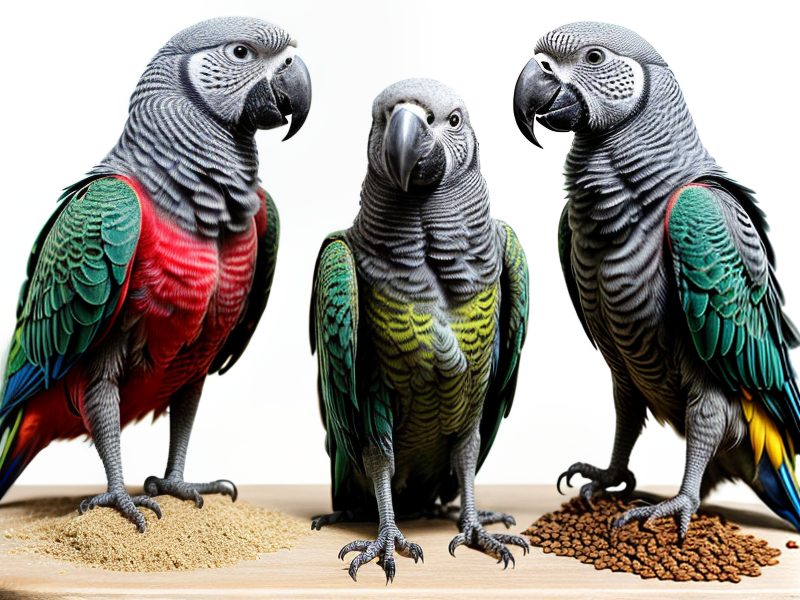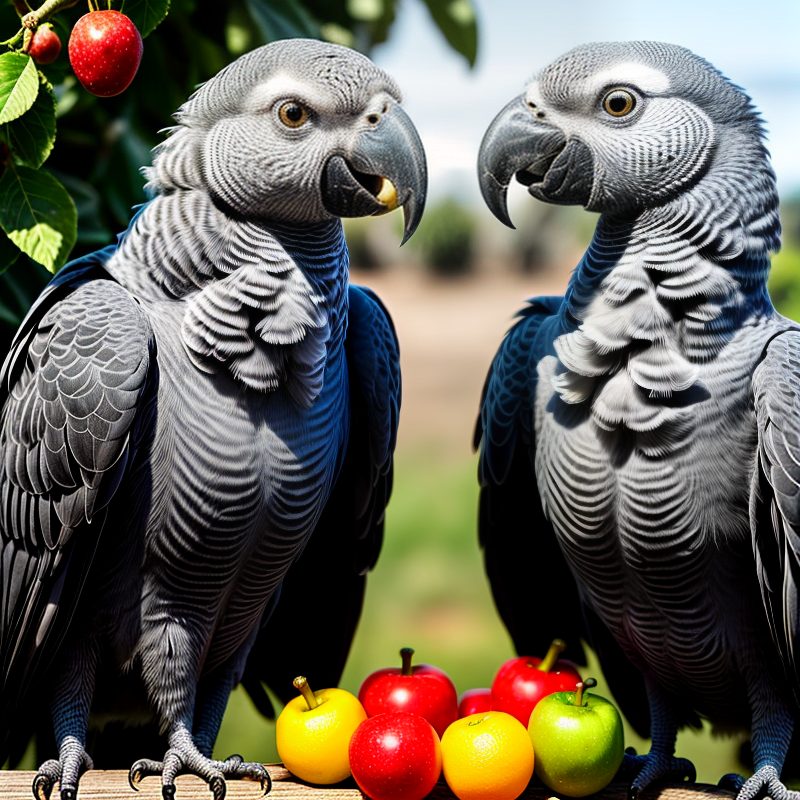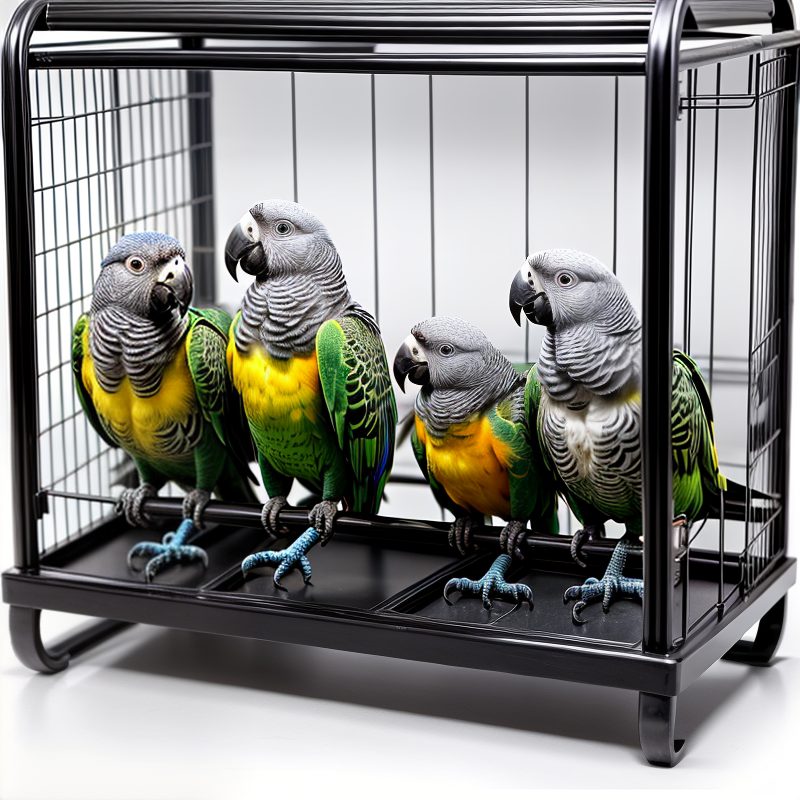The African Grey Parrot (Psittacus erithacus) is renowned for its intelligence, communication abilities, and social complexity. While much attention has been given to the nesting habits of female African Greys, the role of males in the nesting process is equally important. Male African Grey Parrots play a critical role in courtship, nest site selection, preparation, and parental care. This article explores the nesting habits of male African Grey Parrots, providing a comprehensive understanding of their contributions to reproduction and chick-rearing, both in the wild and captivity.
Natural Nesting Environment
Habitat and Distribution
African Grey Parrots are native to the dense rainforests, mangroves, and savannas of West and Central Africa. These environments provide essential resources such as food, shelter, and suitable nesting sites. The parrots are commonly found in countries including Cameroon, Congo, Ghana, and the Ivory Coast.
Nesting Sites
In the wild, African Grey Parrots typically select tree cavities for nesting. These cavities are often found in large, mature trees that offer protection from predators and harsh weather conditions. The height of these nesting sites can vary, but they are generally located high above the ground to reduce the risk of predation.
The Nesting Process
Courtship and Pair Bonding
Courtship is a critical first step in the nesting process. Male African Grey Parrots engage in elaborate courtship displays to attract and bond with a female. These displays include vocalizations, physical displays such as wing flapping and head bobbing, and mutual preening. Successful courtship results in the formation of a strong pair bond, which is essential for cooperative nesting and rearing of chicks.
Selecting a Nesting Site
Once a pair bond is established, both the male and female participate in selecting a suitable nesting site. While the female often takes the lead in inspecting potential sites, the male plays a supportive role. He may help in locating suitable trees and cavities and provide protection while the female examines the sites.
Nest Preparation
After selecting a nesting site, the preparation of the nest begins. Both the male and female African Grey Parrots contribute to cleaning the cavity and sometimes adding nesting materials such as leaves, twigs, and bark. The male often brings these materials to the site, assisting the female in creating a comfortable and secure environment for egg-laying.
Egg Laying and Incubation
Supporting the Female
During the egg-laying period, the male African Grey Parrot provides crucial support to the female. He stays nearby to protect the nest from potential threats and brings food to the female, allowing her to focus on laying and incubating the eggs. This support is essential for the well-being of the female and the developing embryos.
Guarding the Nest
The male’s role in guarding the nest cannot be overstated. Predators and rival birds pose significant threats to the eggs and chicks. The male remains vigilant, using vocalizations and physical displays to deter potential intruders. This protective behavior ensures a higher chance of survival for the offspring.
Parental Care and Chick Rearing
Feeding and Care
Once the chicks hatch, both parents share the responsibility of feeding and caring for them. The male continues to forage for food, bringing it back to the nest and transferring it to the female, who then feeds the chicks. This cooperative feeding ensures that the chicks receive the necessary nutrients for growth and development.
Teaching and Socializing
As the chicks grow, the male African Grey Parrot plays an important role in teaching and socializing them. He models essential behaviors such as foraging techniques, flight skills, and social interactions. These lessons are crucial for the chicks’ development and future independence.
Fledging and Independence
The process of fledging, where the chicks leave the nest and learn to fly, involves significant input from the male. He encourages the chicks to venture out of the nest and practice flying, providing guidance and support. Even after the chicks fledge, the male continues to care for them, teaching them how to forage and navigate their environment until they are fully independent.
Nesting Habits in Captivity
Breeding in Captivity
Breeding African Grey Parrots in captivity requires careful consideration of their natural nesting habits. Providing an environment that mimics their natural habitat is essential for successful breeding. This includes appropriate nesting sites, suitable nesting materials, and a stable social environment.
Nest Boxes
In captivity, breeders often use nest boxes to simulate the tree cavities African Grey Parrots use in the wild. These boxes are typically made of wood and designed to provide a secure and comfortable nesting environment. The dimensions and placement of the nest box are crucial, with the entrance hole size and box depth being particularly important.
Encouraging Natural Behaviors
Encouraging natural behaviors in captive African Grey Parrots is key to successful breeding. This involves providing opportunities for courtship, bonding, and nest preparation. Enrichment activities and a stimulating environment can help promote these natural behaviors, ensuring the parrots feel secure and ready to breed.
Challenges and Considerations
Health and Nutrition
Ensuring the health and nutrition of breeding African Grey Parrots is vital for successful nesting and chick rearing. A balanced diet rich in fruits, vegetables, seeds, and nuts provides the necessary nutrients for egg production and chick development. Regular veterinary check-ups and health monitoring are also essential.
Stress and Environment
Minimizing stress in the breeding environment is crucial for the well-being of the parrots. Factors such as noise, disturbances, and changes in the environment can negatively impact breeding success. Providing a calm, stable, and secure environment helps reduce stress and supports the nesting process.
Legal and Ethical Considerations
Breeding African Grey Parrots in captivity involves adhering to legal and ethical guidelines. These guidelines ensure the welfare of the parrots and promote responsible breeding practices. It is important for breeders to be aware of regulations regarding the breeding, sale, and ownership of African Grey Parrots, as well as to prioritize the well-being of the birds over commercial interests.
Conclusion
The nesting habits of male African Grey Parrots are integral to the reproductive success and survival of the species. From courtship and nest preparation to feeding and protecting the chicks, males play a vital role in every stage of the nesting process. Understanding these behaviors provides valuable insights into the complex social dynamics and natural history of African Grey Parrots.
In captivity, replicating the natural nesting environment and encouraging natural behaviors are essential for successful breeding and chick-rearing. By providing a supportive and enriching environment, breeders can ensure the well-being and reproductive success of these remarkable birds. As we continue to learn about the nesting habits of male African Grey Parrots, we can enhance our appreciation for their complexity and contribute to their conservation and care.
Explore Our African Grey Parrot Gallery
African Grey Parrots in Action
Top Supplies for African Grey Parrots

Premium Parrot Cage
This spacious and durable cage provides a safe and comfortable environment for your African Grey Parrot. It features multiple perches, feeding stations, and a secure locking system.
Stainless Steel Food Bowls
Interactive Parrot Toys
Natural Wood Perches
Vitamin-Enriched Parrot Food

Deluxe Parrot Play Stand
Encourage your African Grey Parrot to exercise and play with this versatile play stand, equipped with ladders, swings, and feeding cups.
Calcium Enrichment Blocks
Parrot Training Clicker
Bird Bath Spray
Parrot Harness and Leash
Discover Your Perfect African Grey Parrot
Explore our selection of African Grey Parrots and find the perfect companion for your home. Browse our range of high-quality parrot supplies to ensure your new friend has everything they need.





